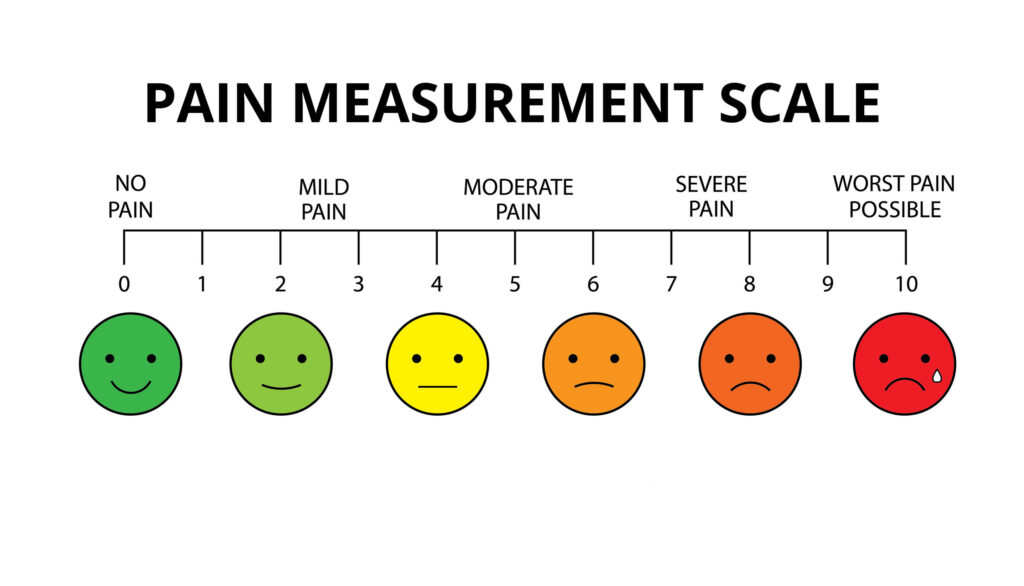How to Talk about Pain to a Doctor
On a scale of 0 to 10 what is your pain? Patients who are asked to describe the level of their pain to a doctor using a numerical scale or smiley faces. Pain scales are used from diagnosis to recovery and often help guide treatment.
While the pain scale helps evaluate the level of pain a patient feels, it’s not the whole story. Here are a few ways of talking to your doctor about pain, to help assess the best treatment options for you.
 Be Creative
Be Creative
Descriptive words can often be helpful when describing your pain to a doctor. Certain conditions or injuries can have specific sensations, such as neuropathy with numbness and tingling sensations that can signify nerve damage. Next time you need to describe pain, here are some words that may help:
- Aching
- Burning
- Cramping
- Splitting/tearing
- Shooting
- Stabbing
- Throbbing
- Dull
- Sharp
Comparing your pain to another pain experience, like a migraine or childbirth can also help your doctor in figuring out the issue. Comparisons and stories can also be helpful for context when talking to your doctor.
Daily Activities
What do you do on a daily basis, and how does pain effect your day to day? Explaining what your day to day is like can help a doctor assess your pain. Think about these questions the next time you go see your doctor.
- Has pain affected your job?
- Is getting out of bed difficult in the morning?
- Has pain limited your physical activity?
- Do you have less energy than normal?
- Do you plan your day around your pain?
These are just a few questions that could help you and your doctor; questions like these can help give a bigger picture about the pain you’re experiencing. This information can give your doctor an understanding of your lifestyle, which can help to develop the right treatment plan.
Share Your Medical History
Not just your medical symptom history, but sharing treatments and therapies you’ve tried in the past, can help your doctor diagnosis pain as well as possible treatment options.
Coming to an appointment (especially with new doctors) prepared to share your medical history including treatments, prescriptions, and vitamins and supplements.
Doctors may ask some of these questions to get a better understanding of your pain:
- How long have you experienced the pain?
- Does anything trigger your pain?
- Is your pain intermittent, or constant?
- Do any of your daily activities increase the pain?
- How frequent is your pain, and how long does it last?
Answers to these questions can help doctors put together a timeline and history of your pain. Another thing that can help medical appointments not seem so overwhelming is keeping a pain journal to track flare-ups, symptoms, and triggers.
 Skip to content
Skip to content
